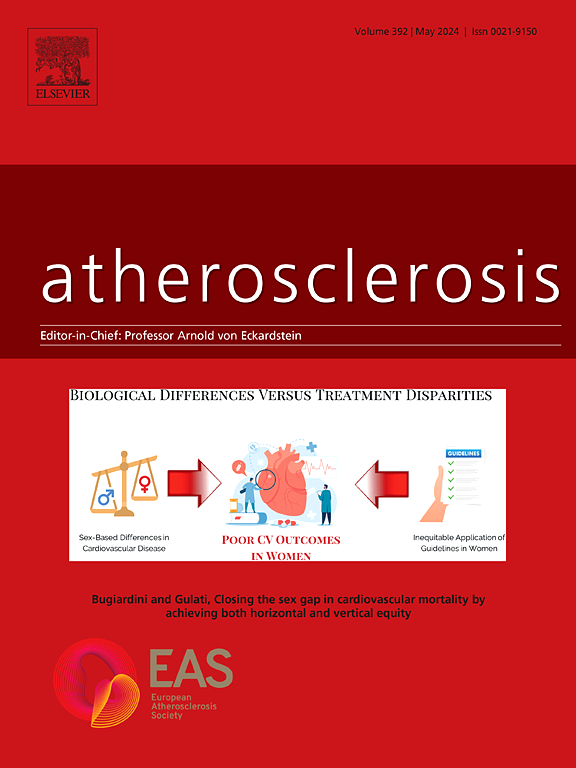Identifying novel drug targets for calcific aortic valve disease through Mendelian randomization
IF 4.9
2区 医学
Q1 CARDIAC & CARDIOVASCULAR SYSTEMS
引用次数: 0
Abstract
Background and aims
Calcific aortic valve disease (CAVD) is characterized by progressive leaflet thickening and calcification, with no available pharmacological treatments. Plasma proteins play a pivotal role in disease regulation. This study aimed to uncover novel therapeutic targets for CAVD using Mendelian randomization (MR) integrated with transcriptomic analysis.
Methods
Protein quantitative trait loci (pQTL) from the deCODE and UK Biobank Pharma Proteomics Project (UKB-PPP) plasma protein databases were used as exposure data. The FinnGen cohort (9870 cases, 402,311 controls) served as the discovery set, while the TARGET cohort (13,765 cases, 640,102 controls) provided validation. MR and summary data-based Mendelian randomization (SMR) were employed to screen for potential causal targets of CAVD. Colocalization analysis was conducted to assess whether CAVD and target proteins shared common causal SNPs. Additional analyses included trancriptomic profiling at multiple RNA levels. Protein-level validation was conducted via Western blot and immunostaining.
Results
Six proteins (ANGPTL4, PCSK9, ITGAV, CTSB, GNPTG, and FURIN) with strong genetic colocalization were identified by MR and SMR analysis. Among these, cellular trancriptomic analysis revealed ANGPTL4 and ITGAV with significantly greater expression in osteogenic group, which was further validated in calcified aortic valves and osteogenic valvular interstitial cells in protein level.
Conclusions
This study identified six causal proteins with strong genetic colocalization for CAVD, with ANGPTL4 and ITGAV emerging as the most promising targets for further investigation.

求助全文
约1分钟内获得全文
求助全文
来源期刊

Atherosclerosis
医学-外周血管病
CiteScore
9.80
自引率
3.80%
发文量
1269
审稿时长
36 days
期刊介绍:
Atherosclerosis has an open access mirror journal Atherosclerosis: X, sharing the same aims and scope, editorial team, submission system and rigorous peer review.
Atherosclerosis brings together, from all sources, papers concerned with investigation on atherosclerosis, its risk factors and clinical manifestations. Atherosclerosis covers basic and translational, clinical and population research approaches to arterial and vascular biology and disease, as well as their risk factors including: disturbances of lipid and lipoprotein metabolism, diabetes and hypertension, thrombosis, and inflammation. The Editors are interested in original or review papers dealing with the pathogenesis, environmental, genetic and epigenetic basis, diagnosis or treatment of atherosclerosis and related diseases as well as their risk factors.
 求助内容:
求助内容: 应助结果提醒方式:
应助结果提醒方式:


